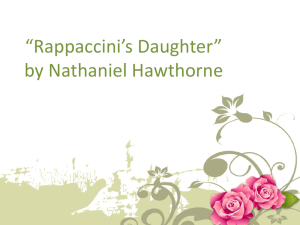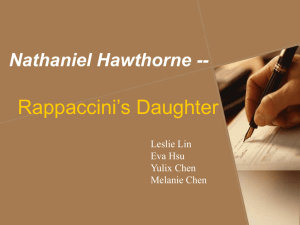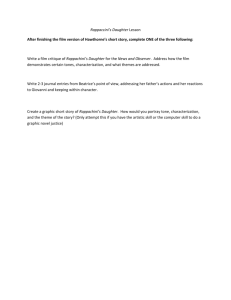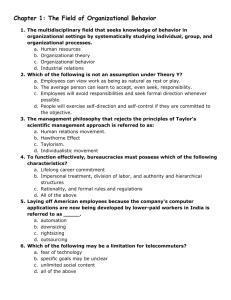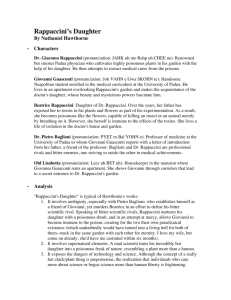Rappaccini's Daughter (and the Birthmark):
advertisement
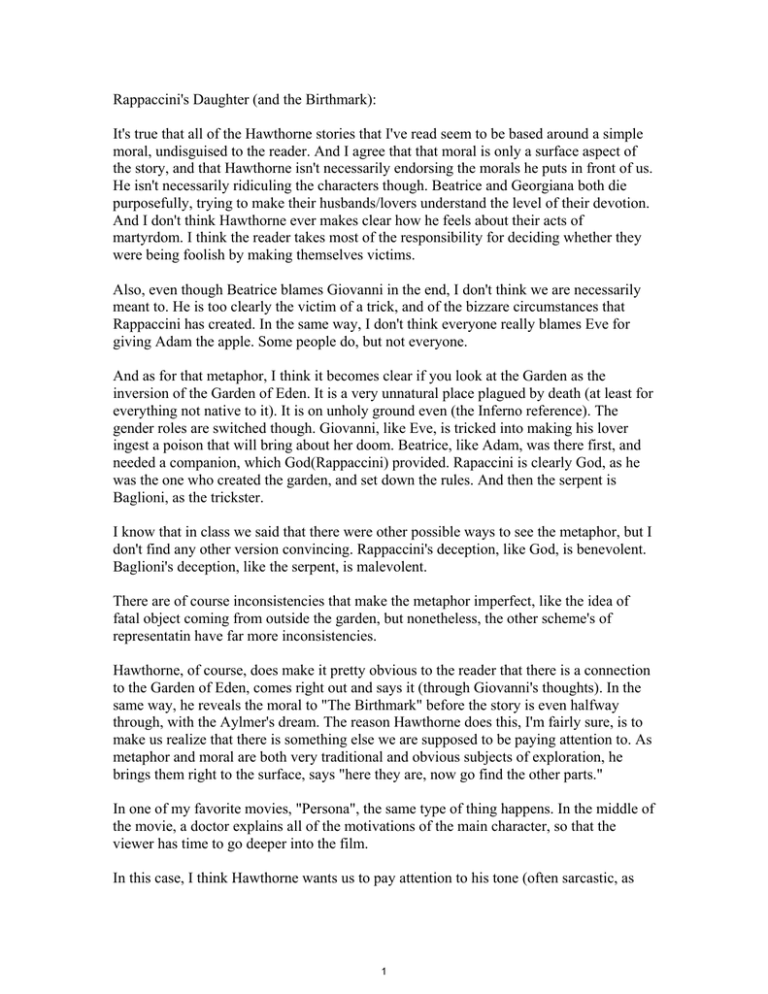
Rappaccini's Daughter (and the Birthmark): It's true that all of the Hawthorne stories that I've read seem to be based around a simple moral, undisguised to the reader. And I agree that that moral is only a surface aspect of the story, and that Hawthorne isn't necessarily endorsing the morals he puts in front of us. He isn't necessarily ridiculing the characters though. Beatrice and Georgiana both die purposefully, trying to make their husbands/lovers understand the level of their devotion. And I don't think Hawthorne ever makes clear how he feels about their acts of martyrdom. I think the reader takes most of the responsibility for deciding whether they were being foolish by making themselves victims. Also, even though Beatrice blames Giovanni in the end, I don't think we are necessarily meant to. He is too clearly the victim of a trick, and of the bizzare circumstances that Rappaccini has created. In the same way, I don't think everyone really blames Eve for giving Adam the apple. Some people do, but not everyone. And as for that metaphor, I think it becomes clear if you look at the Garden as the inversion of the Garden of Eden. It is a very unnatural place plagued by death (at least for everything not native to it). It is on unholy ground even (the Inferno reference). The gender roles are switched though. Giovanni, like Eve, is tricked into making his lover ingest a poison that will bring about her doom. Beatrice, like Adam, was there first, and needed a companion, which God(Rappaccini) provided. Rapaccini is clearly God, as he was the one who created the garden, and set down the rules. And then the serpent is Baglioni, as the trickster. I know that in class we said that there were other possible ways to see the metaphor, but I don't find any other version convincing. Rappaccini's deception, like God, is benevolent. Baglioni's deception, like the serpent, is malevolent. There are of course inconsistencies that make the metaphor imperfect, like the idea of fatal object coming from outside the garden, but nonetheless, the other scheme's of representatin have far more inconsistencies. Hawthorne, of course, does make it pretty obvious to the reader that there is a connection to the Garden of Eden, comes right out and says it (through Giovanni's thoughts). In the same way, he reveals the moral to "The Birthmark" before the story is even halfway through, with the Aylmer's dream. The reason Hawthorne does this, I'm fairly sure, is to make us realize that there is something else we are supposed to be paying attention to. As metaphor and moral are both very traditional and obvious subjects of exploration, he brings them right to the surface, says "here they are, now go find the other parts." In one of my favorite movies, "Persona", the same type of thing happens. In the middle of the movie, a doctor explains all of the motivations of the main character, so that the viewer has time to go deeper into the film. In this case, I think Hawthorne wants us to pay attention to his tone (often sarcastic, as 1 Olga said, or sometimes just dark and pessimistic). I've found that Rappaccini's Daughter is rich with these feelings. The Birthmark doesn't really inspire much in me, I admit. Frankenstein: And just in case you were wondering, I don't believe that Shelley had the same intent, of bringing the moral to the surface just so we can get past it. It came across to me that it was really her goal to make us learn to appreciate the natural and to avoid grasping at power. The message of Frankenstein was just as obvious as in Hawthorne's works, but in general, Shelley gave none of those sarcastic and pessimistic tones to the work. It seems to be a dark horror, wrapped around bright hopeful ideals. Courtesy of Zachary Weston. Used with permission. 2 MIT OpenCourseWare http://ocw.mit.edu 21L.430 / CMS.920 Popular Narrative: Masterminds Fall 2004 For information about citing these materials or our Terms of Use, visit: http://ocw.mit.edu/terms.
